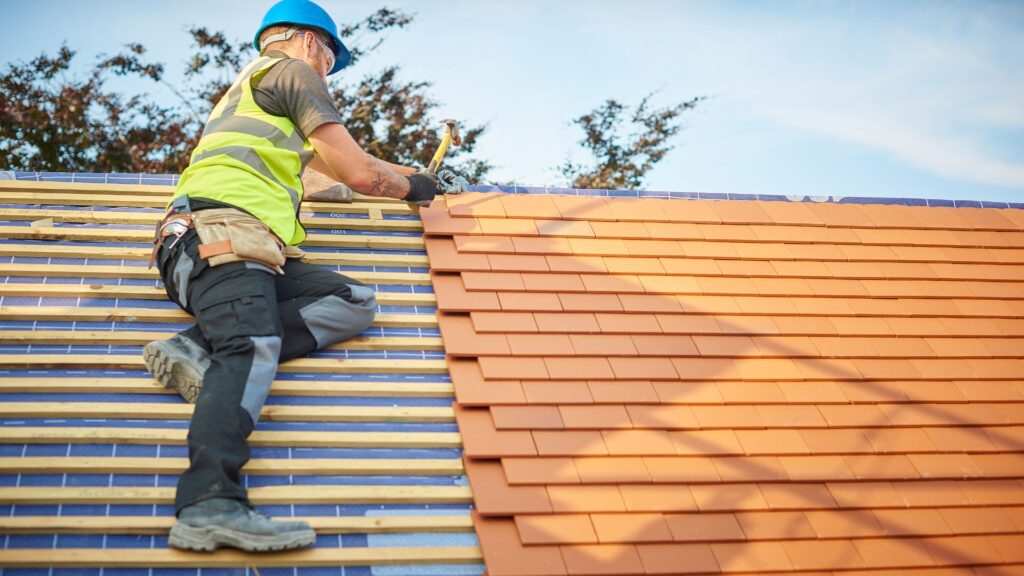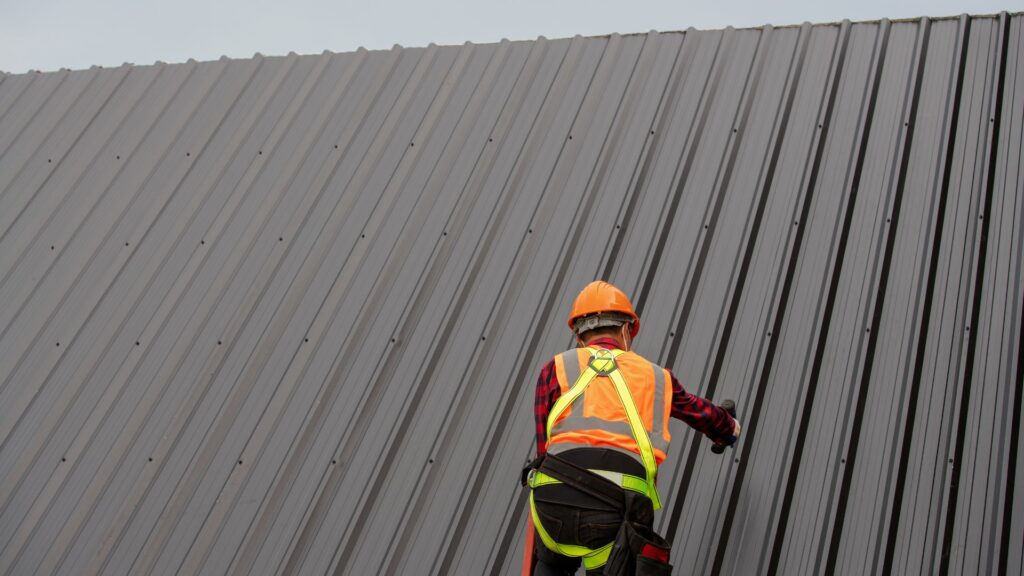When it comes to roof installation, safety should always be the number one priority. Roofing projects involve working at heights and handling heavy materials, which can pose significant risks if proper safety precautions are not followed. This guide aims to provide essential safety tips to ensure that your roof installation project is completed without accidents or injuries. By understanding and implementing these safety measures, you can protect yourself and your team throughout the entire process.
Preparing for Roof Installation

Before starting any roof installation project, it’s crucial to make thorough preparations. Begin by gathering all the necessary safety equipment, including helmets, harnesses, gloves, and non-slip footwear. Additionally, take the time to plan the project carefully, considering factors such as the size and slope of the roof, as well as any potential hazards. Checking weather forecasts is also essential, as working in adverse weather conditions can increase the risk of accidents.
Setting Up a Safe Work Area
Creating a safe work area is essential for preventing accidents during roof installation. Start by clearing the work area of debris and any other hazards that could cause slips, trips, or falls. Secure ladders and scaffolding properly to ensure stability and minimize the risk of falls from heights. It’s also a good idea to establish a controlled access zone around the work area to keep unauthorized personnel away from potential dangers.
Proper Use of Personal Protective Equipment (PPE)
Personal protective equipment (PPE) is essential for protecting workers from injury during roof installation. Ensure that all workers have access to the necessary PPE, including hard hats, safety glasses, and fall protection gear such as harnesses and lanyards. It’s crucial to provide training on the proper use and maintenance of PPE to ensure that it provides effective protection. Regularly inspect PPE for signs of wear and tear and replace any damaged equipment promptly.
Safe Handling of Materials and Tools
Handling materials and tools safely is critical for preventing accidents and injuries during roof installation. Use proper lifting techniques when handling heavy materials to avoid strains and sprains. Store materials and tools securely when not in use to prevent them from becoming tripping hazards. Before using any tools, inspect them for defects or damage, and repair or replace them as necessary to ensure safe operation.
Working Safely on the Roof
Working on the roof presents unique safety challenges due to the risk of falls from heights. Always follow ladder safety protocols when accessing the roof, ensuring that ladders are stable and securely anchored. Utilize fall protection systems such as guardrails, safety nets, or personal fall arrest systems to prevent falls. Be mindful of common hazards on the roof, such as skylights, weak spots, and unsecured materials, and take steps to avoid them.
Communicating and Coordinating with Team Members
Effective communication and coordination are essential for maintaining safety on the job site during roof installation. Establish clear communication channels and ensure that all team members understand their roles and responsibilities. Conduct regular safety meetings to review safety protocols, address any concerns, and reinforce the importance of safety on the job.
Responding to Emergencies
Despite best efforts to prevent them, accidents and emergencies can still occur during roof installation projects. It’s essential to have a plan in place for responding to emergencies, including procedures for administering first aid and contacting emergency services. Ensure that all workers are trained in emergency response protocols and know how to react quickly and effectively in case of an accident or injury.
Post-Installation Safety Checks
After completing the roof installation, conduct thorough safety checks to identify and address any remaining hazards. Inspect the completed roof for any loose materials, exposed nails, or other potential safety hazards. Conduct a final cleanup of the work area to remove any debris or leftover materials that could pose a risk. Take the time to review the project as a whole, identifying any lessons learned and areas for improvement in safety protocols.
In conclusion, safety should always be the top priority during roof installation projects. By following the safety tips outlined in this guide, you can minimize the risk of accidents and injuries and ensure that your project is completed safely and successfully. Remember to prioritize safety at all times, and don’t hesitate to seek professional assistance if you encounter any safety concerns during your roof installation project. For expert guidance and assistance with your roofing needs, contact Advosy today. Your safety is our top priority.


